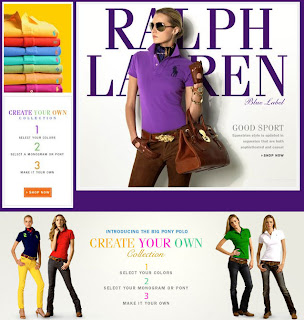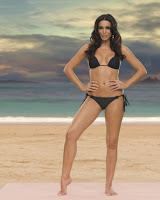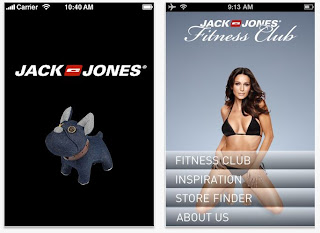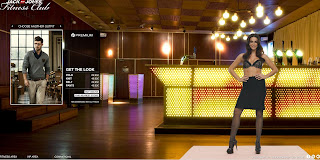Some best practices apply to all social media platforms — be human, be genuine, reply to fans, foster conversation, don’t be gimmicky, and don’t syndicate the same content to every social channel, etc. But the tips below apply specifically to Facebook Timeline Brand Pages and are geared to take your company’s fan base — and revenues — to the next level.
If yours is a small business with little budget for social media or marketing, you need not worry — you can get a lot out of Facebook for free merely by doing it well. The more compelling and engaging your content is, the more it will be “liked” and commented on, thus catapulting your content — and brand — into organic buzz through more and more news feeds.
1. Embrace Images
Timeline is much more image-focused than earlier iterations of Brand Pages, so start snapping. You don’t need to invest in a fancy camera — in fact, it’s a lot easier just to use a smartphone. Show fans what goes on behind the scenes — sketches and mockups always make for good fodder, and “food porn” shots tend to make mouths water and Likes escalate. Social media naturally makes brands accessible — use Timeline to offer a peek at the more human side of your brand.
For example, the White House‘s photo of President Obama at a local Washington, D.C. sandwich shop accomplishes multiple goals: It reinforces Obama’s commitment to small business, it gives great visibility and awareness to a small business, and it shows that Obama is a “regular guy” who eats hoagies, just like you and me.
2. Make the Most of Your Cover Photo — It’s Prime Real Estate
“The new cover photo captures the culture and essence of a brand and can showcase their products — it’s the first thing people will see when they visit a brand’s page,” says a Facebook spokesperson.
A recent eye-tracking study noted that consumers pay far more attention to the cover photo than any content on the wall, so put thought into your photo. Are you running a promotion or opening a new store? Use a high-resolution photo, and humanize your brand with faces — the same study found that cover photos with faces attract more attention than those without, evidenced on Rent the Runway’s Facebook Page.
The cover photo is your chance to make a strong first impression — let it tell the story of your brand and pull people in. You can change the cover image as often as you’d like, and you can crop a perfectly sized cover photo here.
Nestled in the cover photo is the traditional profile picture. If you have a snazzy cover photo, then the profile picture is a great spot for your company’s logo. This is the thumbnail image that will accompany the brand’s comments and posts, so it should clearly define your brand — even when the image is smaller than 50 pixels.
3. Pay Attention to Insights
Facebook does a lot of the work for you, especially when it comes to analytics. Your job is to understand what they mean and how to use them to your advantage. Facebook tells you who your new fans are and breaks them down by gender and location to help you get a sense of who you’re talking to on Facebook.
If you’re using a mix of paid and organic tools for nabbing more fans, Insights will tell you how you reached people, so you know whether your time or money are yielding better returns. If you’re a big Excel nerd, you can even export the Insights data for further analysis. Here’s a breakdown of what you’ll see in the Insights dashboard:
- People Talking About This (PTAT) — The total number of people that have engaged with your page, whether they “liked” something, commented, shared or answered a question. This asses engagement beyond the old standards, Likes and clicks.
- Friends of Fans –The aggregate number of friends all your fans have, meaning that each post has the potential to reach these fans (since their “Like” or comment will go on friends’ news feed, thus propagating your content).
- Reach — The total number of people who have seen content associated with your page — this number offers a sense of how far your message has traveled.
- Virality — The percentage of fans who saw a story from your Page and interacted with it, either by “liking,” commenting or sharing. Pay attention to your virality percentage to assess engagement and tweak your content.
4. Highlight or Pin Your Best Posts
Facebook is no longer a chronological river of posts — you can opt to draw more attention to a single post by “highlighting” it. “Highlight” your brand’s most important information by selecting the star icon on the top right corner of any post on your Timeline. Doing so “displays your update across the width of your page, giving more weight to key news,” says Nicole Schwartz, social media and marketing manager at Sprinkles.
Facebook recommends taking advantage of the “Pin to Top” option on your Brand Timeline one post per week to extend the life of the content. When you pin something onto the timeline, it not only becomes larger but also becomes the first item within the Timeline itself. A Facebook spokesperson says Red Bull pinned a month-old video of its sponsored skier Bobby Brown to its Facebook Brand Page, which took the post from 10,000 “Likes” to 12,000 “Likes”. Social media users are bombarded with information 24/7, so pinning helps to cut through the noise and ensure that your fans will see your best posts.
5. Get Your Apps in a Row
What do you find just below the cover photo? Apps. And according to the eye-tracking study mentioned above, these apps get more visibility than everything below them on your Timeline.
Apps now include photos, videos, notes, events and more than 3,000 other options to customize your Facebook Page. For example, if you have a restaurant, you can use a menu app so fans can see your offerings without having to go to your website, and if you have a fashion company, you can use Polyvore.
Any custom-built apps (like ones by Offerpop or Wildfire), campaigns or promotions can find a home here at the top of your Timeline, and you can rearrange the order of the apps and choose a custom thumbnail for the service.
6. Make Use of Facebook’s New Ad Suite
In February, Facebook released a slew of new ad tools to help brands enhance their marketing; Reach Generator is one of these tools.
A study by AllFacebook in January revealed that a post on a Brand Page is seen by just 17% of fans. Reach Generator plays with the news feed algorithm to expose fans to content when they otherwise would have missed it in a way to boost visibility across the platform. Ice cream brand Ben & Jerry’s used Reach Generatorand became visible to 98% of fans over a 28-day period — a dramatic improvement. You’ve invested time and energy into your social media presence, so shouldn’t people see it? The cost of these tools is tiered based on the number of fans the brand has.
Other new ad tools include Logged Out ads (seen above), Premium on Facebook and Offers.
7. Run Contests to Boost Engagement
People love winning, whether it’s a t-shirt, early access to a sample sale or a free flight to New York. Prizes don’t have to be outrageous but they should be on-brand and relevant. In fact, Offerpop founder and CMO Mark Cooper says contests with “lots of low-value prizes that speak to your audience generate much more participation than one or two high value prizes.” With more odds of winning, fans are more likely to engage, even for something small. A great prize is a grab bag of merchandise and branded swag — offering something on-brand will attract your core demographic instead of freeloaders, says ModCloth Community Manager Natasha Khan.
Keep the Facebook contest as simple as possible to get consistent results and a lot of submissions. Asking fans to “like,” comment, vote or to upload a photo with a tag of the brand are all ways to generate buzz and get friends of fans involved. All of these actions will increase your “reach” on Facebook, and UGC uploads provide you with a slew of content that you could reuse down the line. If you do run a promotion, Cooper advises brands to change the cover photo to promote the contest (but leave out the call-to-action copy, which goes against Facebook’s guidelines) and post about the contest every day, pinning or highlighting for maximum effect.
8. Drop in Those Milestones
Timeline is a digital scrapbook and it’s a great way to tell the story of your brand, much like the Facebook profile can tell the story of one’s life. Populate the earlier space on your Timeline with Milestones — new product launches, memorable moments, and big company advances — and be sure to include a photo. Milestones add a human touch to your brand and encourage consumers to learn more about your company and thus, become more invested in it. Consumers are curious and love to know more about their favorite brands, and Milestones are a great way to make it easy for them while also eliciting “Likes” and subtly marketing your brand.
9. Embrace Your Fans
Because Timeline condenses fan posts into a box on the right, Facebook Timeline transformed the two-way scheme into more of a one-way broadcast mechanism for brands. A good way to mix up your content is to embrace and show off your fans — post their pictures and Instagrams (with a link to give them a shout-out) on your Timeline to put your fans front and center. Rent the Runway’s Style Awards highlight how RTR consumers have worn their dresses, a gesture that would make anyone feel like a fashionista.
Innovative Uses of Facebook Timeline for Brands
View As Slideshow »
The soda company's branded Facebook Timeline page took advantage of the Leap Year by pretending that the extra day "created a rip in the Fanta space-time continuum and sucked four of our characters: Gigi, Lola, Floyd and Tristan out of the Cover Photo and into the past."
Fans of Fanta's Page must engage in its "Lost in Time" game, which requires navigating through the Fanta Timeline, to bring the characters back to the future.
Red Bull immediately came out with the "Red Bull Timeline Timewarp" when it switched over to the new features.
The game, which ends March 15, is a scavenger hunt for fans, rewarding them with prizes for finding hidden clues throughout the brand's Timeline.
The men's deodorant company is known for its quirky, viral campaigns, and it's living up to expectations on the brand page.
Between hilarious statuses, Old Spice posts odd photoshopped images well-suited for Internet culture -- including an epic cover photo, which features tiger eyes, a helicopter and a can of Old Spice shooting lightning out of a volcano. Only on the Internet...
ESPN is making good use of the "fill-in-the-blank" approach to current events in sports, and lets fans shout out to their favorite teams.
The liquor company uses Timeline to give its fans a sneak peak into the fictional captain's life at sea.
This is a great way for musicians and other bands to utilize Timeline. Fans enjoy fun and anecdotal facts about the band and its history.
Coca Cola's Timeline encourages fans to solve riddles that lead to various interactive websites. For example, this one leads to blowingbubblesinthesky.com.
Verizon asks its Facebook fans to submit photos from their Verizon phones or tablest for a chance to win a tablet and be featured as the cover photo.
For a company that dates as far back as Ford, Timeline provides a great opportunity to show off old photos and share extensive history.
Facebook recently extended Timeline back to the year 1800. Organizations such as the U.S. Navyand Army can now share their full histories.
What are your best practices for brands on Facebook Timeline?






















